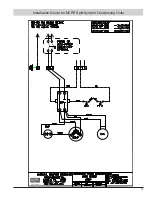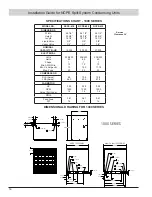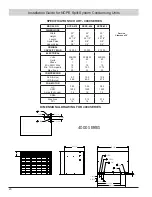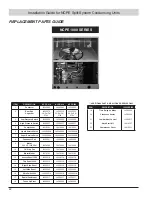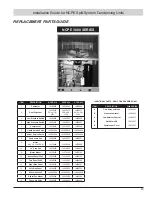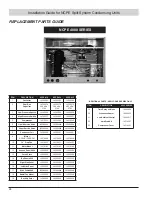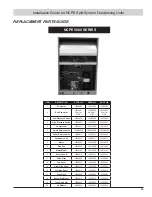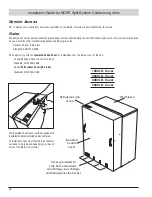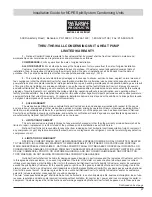
Installation Guide for NCPE Split-System Condensing Units
13
Air Flow Chart
1000, 3000, & 4000 Series
Model
Air Handler
Tap
CFM
Static
NCPE-418
NCPAH-24-A
2
580
0.1
NCPE-418
B6VMMX24
6, 8
650
0.1
NCPE-424
NCPAH-24-A
5
830
0.1
NCPE-424
B6VMMX24
5, 7, 8
850
0.1
NCPE-430
NCPAH-36-A
1
950
0.1
NCPE-430
B6VMMX36
1, 5, 6
950
0.1
Air Flow Chart
5000 Series
Model
Air Handler
Tap
CFM
Static
NCPE-418 NCPAH-24-A
2
580
0.1
NCPE-424 NCPAH-24-A
5
820
0.1
NCPE-430 NCPAH-36-A
1
950
0.15
NCPE-418 NCPAH-24-M
1
620
0.1
NCPE-424 NCPAH-24-M
4
860
0.1
NCPE-430 NCPAH-36-M
2
1045
0.15
Maintenance
1.
Annually clean the inside of the unit to keep the weep holes
in the base pan and in the fan scrolls open to assure proper
drainage of water from the unit.
2.
Keep the condenser coil clean and free of anything that
restricts free air flow. On sea coast applications the condenser
coil should be washed periodically to remove salt accumulation.
3.
Reduced indoor air flow through a duct system will cause
indoor coil to ice up in cooling. If this condition is allowed to
continue, premature system failure will result. Indoor air filters
should be cleaned and changed regularly.
4.
Annually check units mounting to structure to ensure
integrity. Seal between cabinet and/or sleeve for air or water
leakage. Check exposed surfaces for corrosion. Replace or paint
part as required. This maintenance is critical to prevent stains
and damage to exterior surface of building.
5.
Inspect refrigerant piping for leaks and suction line insulation.
Improper insulation can cause condensate water damage.
6.
Pressure and temperature readings of high and low side
of system should be checked for proper super heat and/or
subcooling. Correct if required.
7.
Inspect motor mount, amps to nameplate, hubs for tightness,
balance, and rust or corrosion.
8.
Inspect wire connection for evidence of arcing, overheating
and deterioration
Checkout Procedures and
Troubleshooting
CHECKOUT PROCEDURE
After installation has been completed, it is recommended
that the system be checked against the following list:
1. Leak check refrigerant lines.
2. Properly insulate suction lines and
fittings.
3. Properly secure and isolate all
refrigerant lines.
4. Seal passages through masonry.
If mortar is used, prevent mortar
from coming into direct contact with
copper tubing.
5. Verify that all electrical connections
are tight.
6. Observe outdoor fan during on cycle
for clearance and smooth operation.
7. Be sure that indoor line drains freely.
Pour water into drain pan.
8. Be sure that supply registers
and return grilles are open and
unobstructed.
9. Be sure that a return air filter is
installed.
10. Be sure that the correct airflow
setting is used. (Indoor blower motor)
11. Operate complete system in each
mode to ensure safe operation.

















